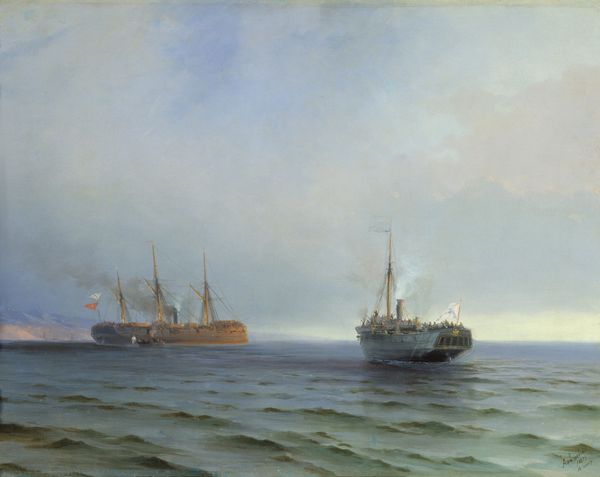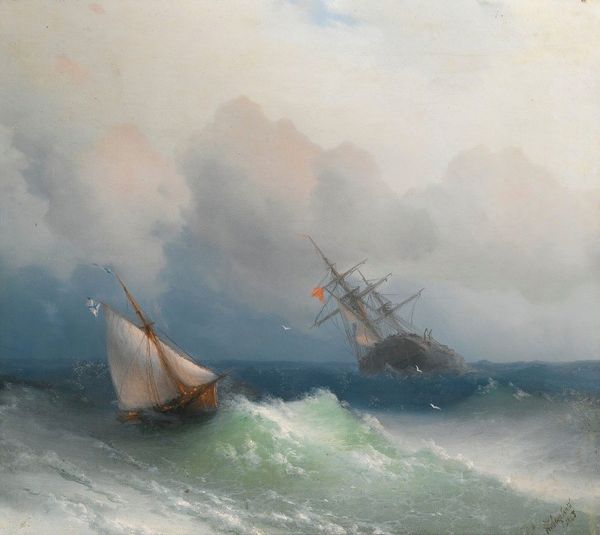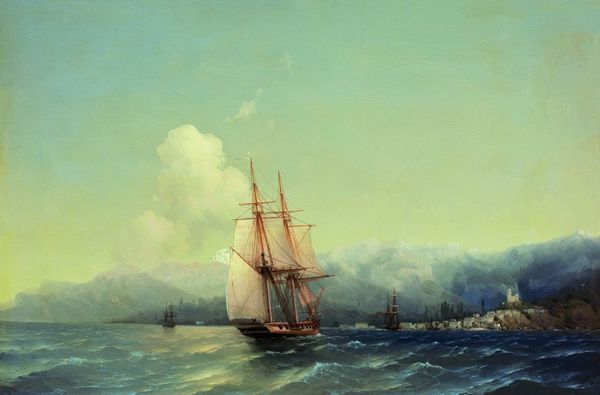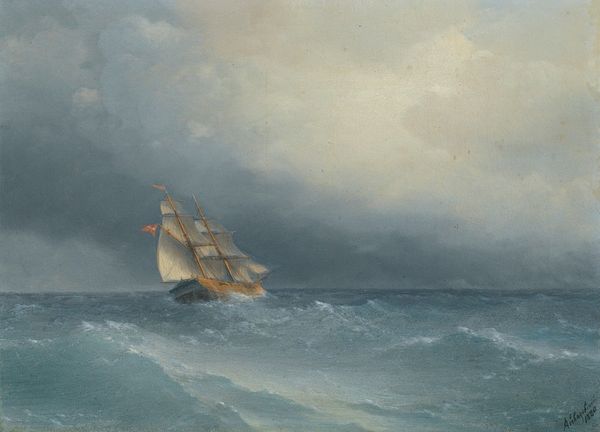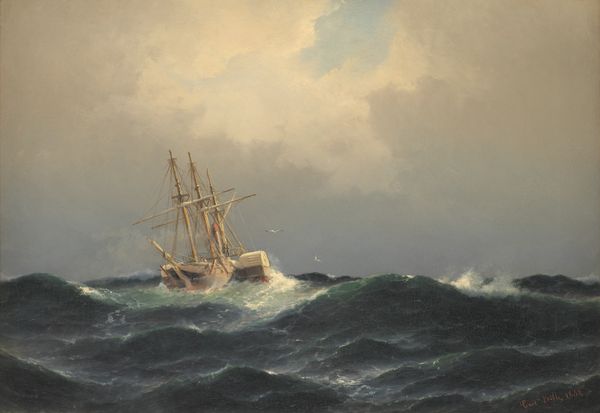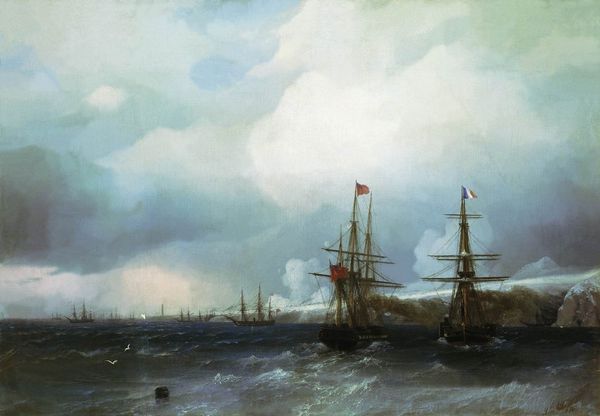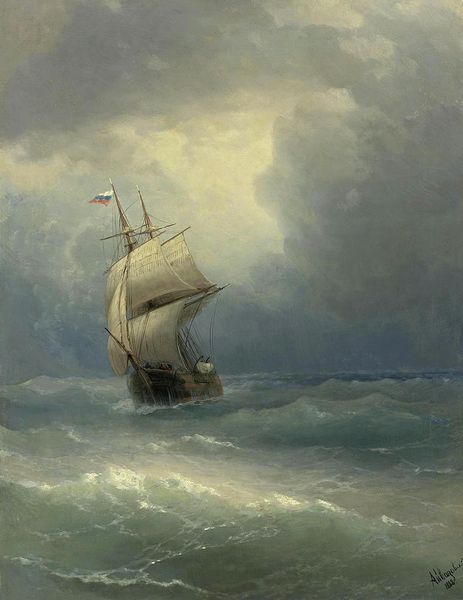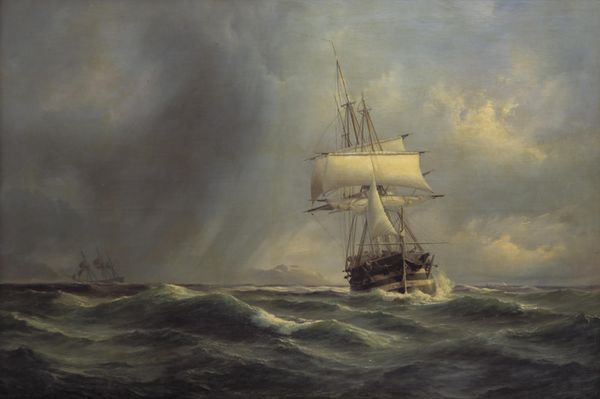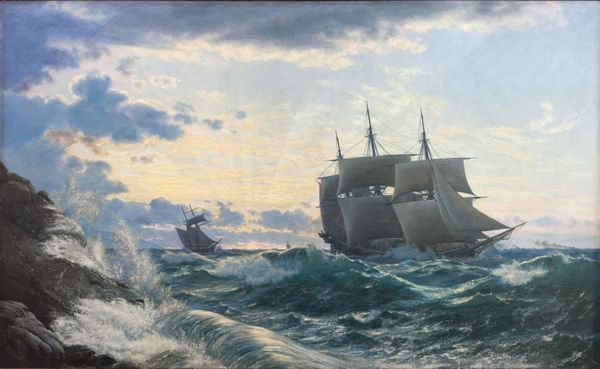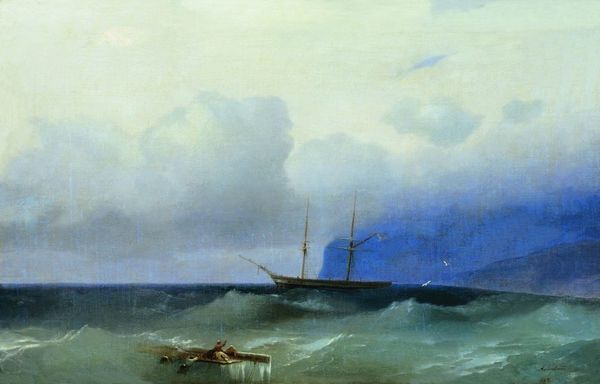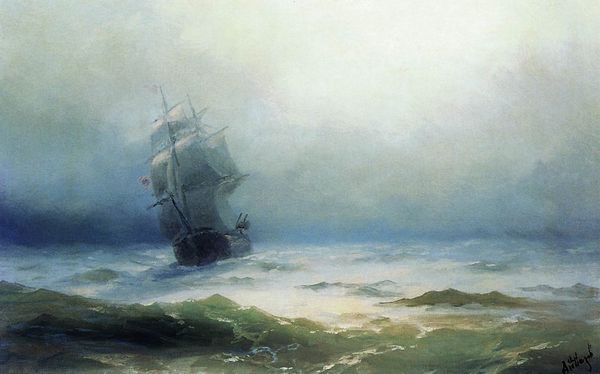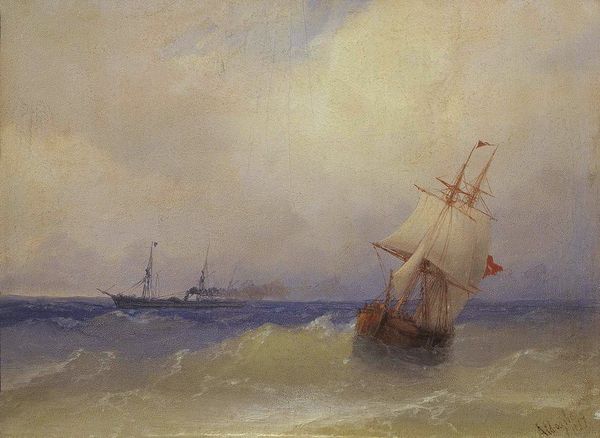
Copyright: Public domain
Curator: This painting is Ivan Konstantinovich Aivazovsky’s "Battle of Steamship Vesta and Turkish Ironclad," created in 1877. Editor: Immediately, I notice the overwhelming presence of the sea, its churning waves occupying a large portion of the canvas. There's a drama to it, despite the somewhat muted palette. Curator: Absolutely. Aivazovsky, known for his seascapes, imbues this naval battle with symbolic weight. Water, of course, is a potent symbol of the unconscious, the vast unknown. The ships locked in combat become metaphors for human struggle against overwhelming forces, and here, perhaps the romanticized struggle of Russia. Editor: The formal construction contributes heavily to that sense of drama. Look at the contrasting textures: the rough, agitated water versus the smoother, cloud-filled sky. That visual contrast heightens the sense of chaos inherent in battle. Curator: And note the clouds of smoke, partially obscuring the ironclad. Aivazovsky uses these as visual devices but they also invoke a history of naval warfare, signaling disruption, loss, the fog of war in both a literal and psychological sense. We’re experiencing the moment, but at a remove. Editor: There is a real painterly treatment to the sky itself – these soft, pale washes. Though depicting a rather fierce battle, he handles the materiality with surprising delicacy, giving it almost a dream-like quality. The scale, the ships appearing small against such a large natural scene... Curator: It echoes Romantic ideals, the individual against a vast, sublime power. While portraying a specific historical event, Aivazovsky taps into something more universal. The heroism implied speaks to Russian identity at the time. Editor: Yes, even the limited palette of blues, greens, and whites adds to that dreamlike quality, softening the stark reality of war into a more palatable, even romantic vision. It emphasizes the grand spectacle rather than the visceral horrors. Curator: Through this potent combination of realism and symbolism, Aivazovsky leaves us contemplating not just a battle, but also its deeper cultural meaning, and that resonates through history. Editor: For me, breaking down its pure formal devices—light, color, texture—allowed us to see this history painting transcend genre and to reveal more than just conflict.
Comments
No comments
Be the first to comment and join the conversation on the ultimate creative platform.
